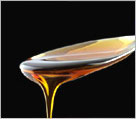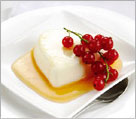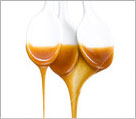
Home![]() Profile
Profile
![]() Product
Range
Product
Range![]() Industries
Industries![]() Infrastructure
Infrastructure![]() Our
Quality
Our
Quality![]() Custom
Manufacturing
Custom
Manufacturing![]() Network
Network![]() Contact
Us
Contact
Us![]() Send
Enquiry
Send
Enquiry
Dyestuffs|
Inkjet Dyes
| Dyes for Wax Printing |
Textile Auxiliaries |
Optical Brightner |
Caramel
Color | Synthetic
Food Colors
Natural Food Colors|
Pigments| Inorganic
Pigments| Dyes Intermediates|
Resist Salt|
Klostrozal Dyes for Soap And
Detergent



Colour Index | Dyes | Pigments | Applications | Glossary | FAQ's | Buyers Guide | Global Dyestuff Industry
![]()
| About Caramel Colors | Applications | Physical & Chemical Properties |
| Grades |
 One
of the most important features of the caramel color is that it is easy to
handle and store because of its inherent chemical properties. The chemical
composition of the caramel color is such that it retains its microbiological
stability for longer periods provided it is stored in proper packings. Since
we follow the international production process approved by the US FDA and
European countries, our caramel colors comply with the international quality
standards.
One
of the most important features of the caramel color is that it is easy to
handle and store because of its inherent chemical properties. The chemical
composition of the caramel color is such that it retains its microbiological
stability for longer periods provided it is stored in proper packings. Since
we follow the international production process approved by the US FDA and
European countries, our caramel colors comply with the international quality
standards.
 We
offer a complete range of caramel colors that serve almost every segment of
the food & beverages industry. Different applications and usages of
caramel color in given below:
We
offer a complete range of caramel colors that serve almost every segment of
the food & beverages industry. Different applications and usages of
caramel color in given below:
| Cocoa Extender | Chocolate Breads | General Baking Applications |
| BBQ | ondiments | Flavoring Extracts | Gravy and Gravy Bases |
| Meat Rubs | Pancake | Poultry Coating | Preserves |
| Seasoning Mix | Soya Sauce | Fish Sauce | Waffle Syrup |
| Vinegars | Beer | Iced / RTD Teas | Lemonades |
| Lemonades | Protein Drinks | Drinks | Whiskey / Rums / Wines / Brandy |
| Candy / Licorice | Cereals | Coffee Extender | Dairy Products |
| Pet Food | Soups | Textured Protein | Vinegars |
 Caramel
Colors strength is defined as its Tinctorial Power, KO.56. Tinctorial power
is the absorbance of a 0.1% weight / volume solution. It is measured through
a 1 cm light path at a wavelength of 560 nanometers (nm). The weight/ volume
is measured using a high quality spectrophotometer. Higher the value of the
absorbance, darker is the Caramel Color.
Caramel
Colors strength is defined as its Tinctorial Power, KO.56. Tinctorial power
is the absorbance of a 0.1% weight / volume solution. It is measured through
a 1 cm light path at a wavelength of 560 nanometers (nm). The weight/ volume
is measured using a high quality spectrophotometer. Higher the value of the
absorbance, darker is the Caramel Color.  Caramel
color usually contain sulfites because it is produced by using sulfite
reactants. Since the percentage of the sulfite is very low, it is taken into
account of consideration while complying to the FDA regulations. Positively
charged caramel color is also produced. In its production process, sulfite
is not used. We have developed such caramel color that helps the food
manufacturers to keep sulfite content low in their products.
Caramel
color usually contain sulfites because it is produced by using sulfite
reactants. Since the percentage of the sulfite is very low, it is taken into
account of consideration while complying to the FDA regulations. Positively
charged caramel color is also produced. In its production process, sulfite
is not used. We have developed such caramel color that helps the food
manufacturers to keep sulfite content low in their products.
Colour Index | Dyes | Pigments | Applications | Glossary | FAQ's | Buyers Guide | Global Dyestuff Industry
Home![]() Profile
Profile
![]() Product
Range
Product
Range![]() Industries
Industries![]() Infrastructure
Infrastructure![]() Our
Quality
Our
Quality![]() Custom
Manufacturing
Custom
Manufacturing![]() Network
Network![]() Contact
Us
Contact
Us![]() Send
Enquiry
Send
Enquiry